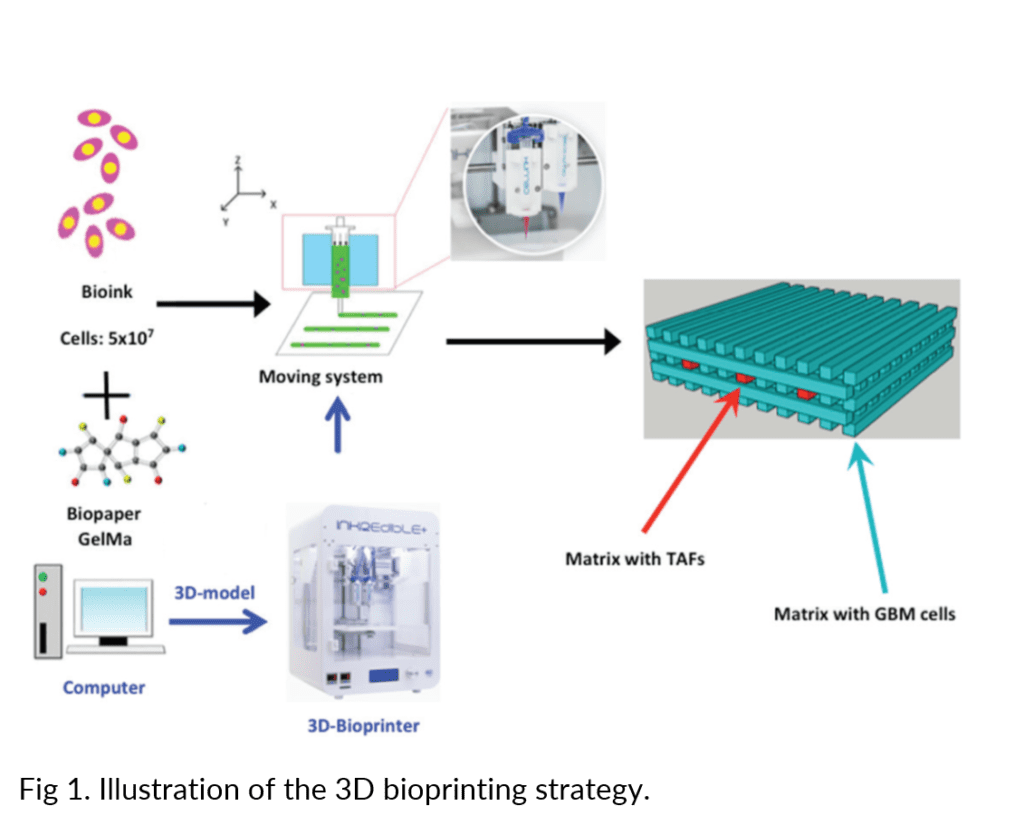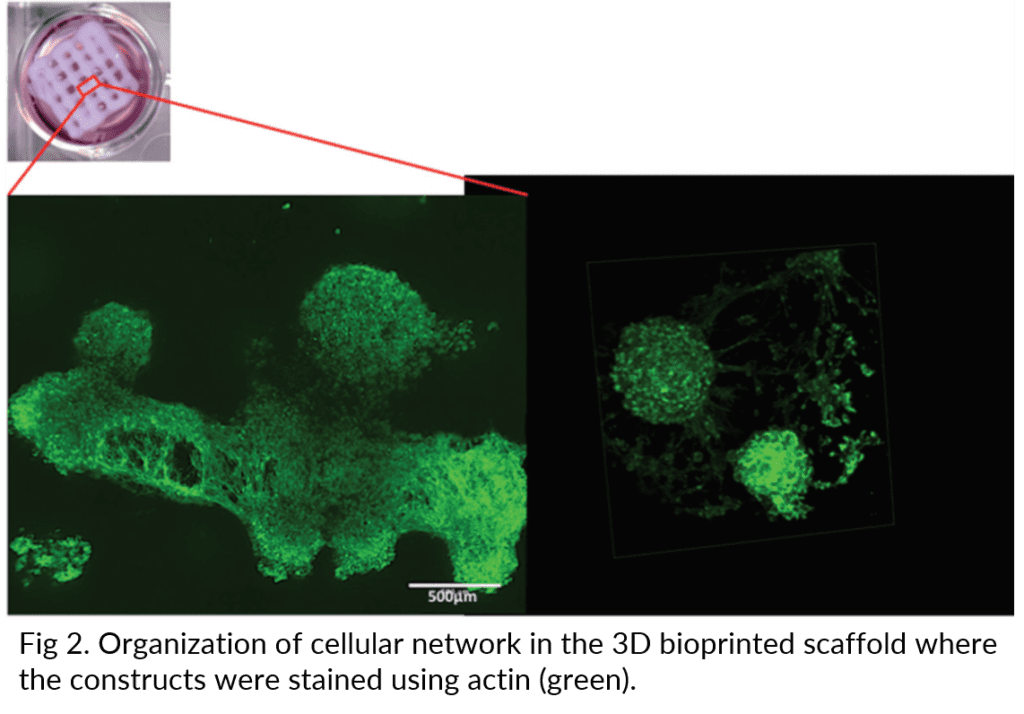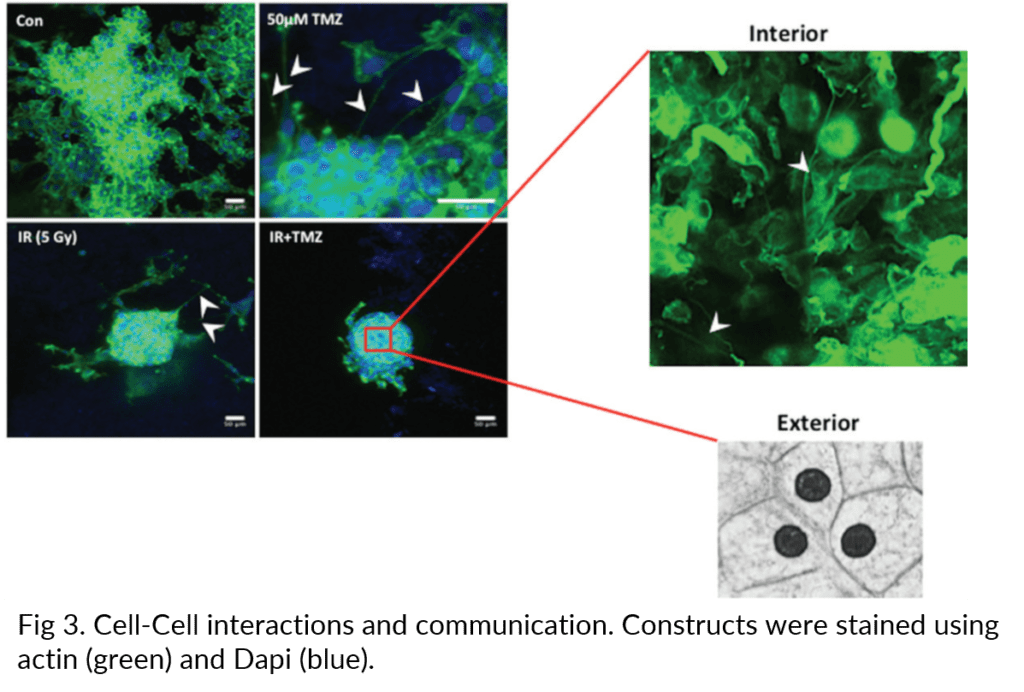Customer testimonial
from L. Oliver & C. Salaud
"Developing a 3D biosphere model"
Products used:
CELLINK LAMININK ➝
INKREDIBLE+
Testimonial
“The brain tumor is a complex and dynamic system consisting of various biochemical and mechanical cues that act in conjunction with its microenvironment. As such, a multicellular tumor in vitro model would be a powerful tool to resemble tumor pathophysiology.
We have attempted to develop a 3D biosphere model using Glioblastoma Multiforme patient-derived cultures (PDC) that would incorporate glioma cells with cognate cancer-associated fibroblasts (CAFs) or tumor-activated fibroblasts (TAFs). The effect of CAFs and/or TAFs on the proliferation, cell-cell interactions and response to treatment of PDC is being evaluated. We are using this model to reconstruct a simplified tumor using 3D bioprinting and then treating the tumor with a modified Stupp protocol (protocol used in clinic) to determine the role of the microenvironment on tumorigenesis.
These types of experiments are being performed using the CELLINK’s LAMININK bioinks.”

“The new CELLINK’s LAMININK bioinks is so easy to use. The bioink is more fluid, making the mixing with cells much easier and quicker, thus less stress on the cells. The results obtained after bioprinting were great: the cellular structures were present after only ONE week and the distribution of cells and cellular structures appeared more uniform. More importantly, the cellular structures present resembled closely those observed in vivo.”







